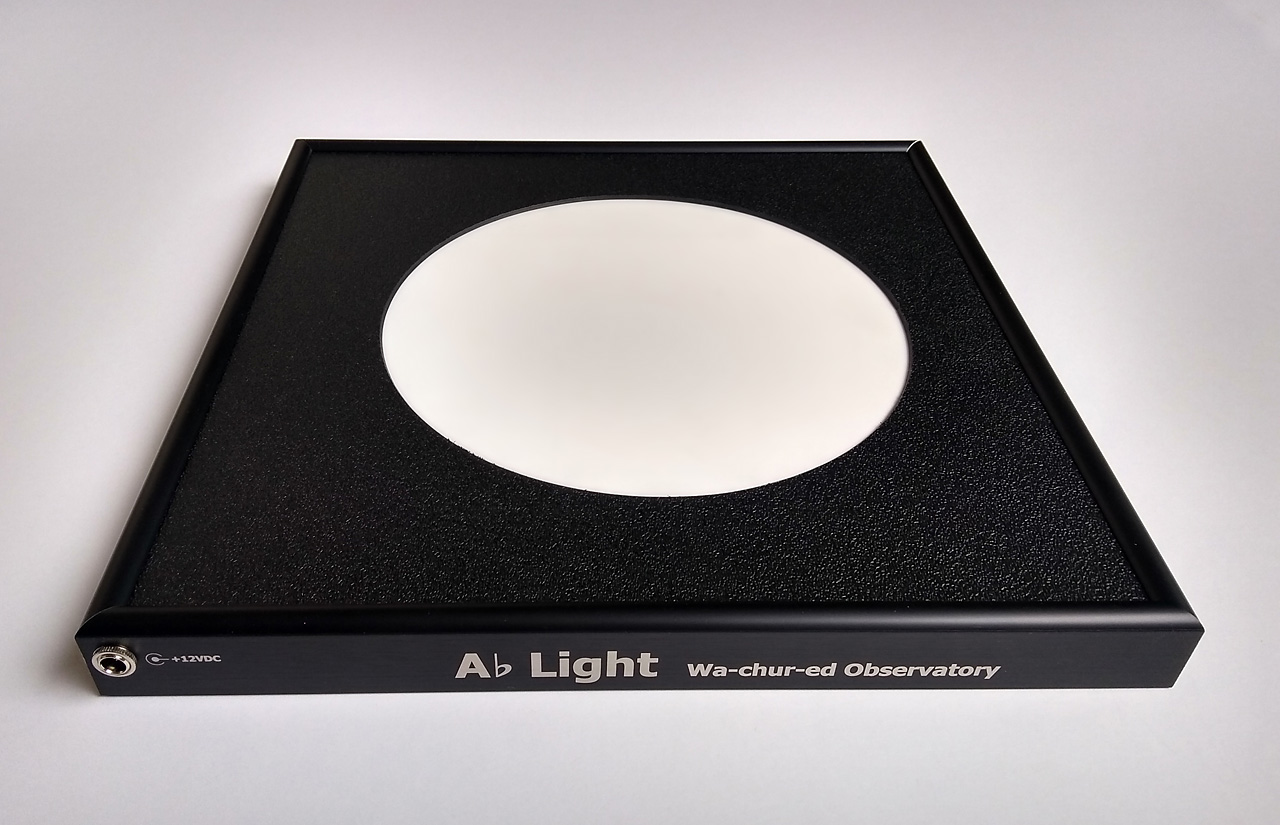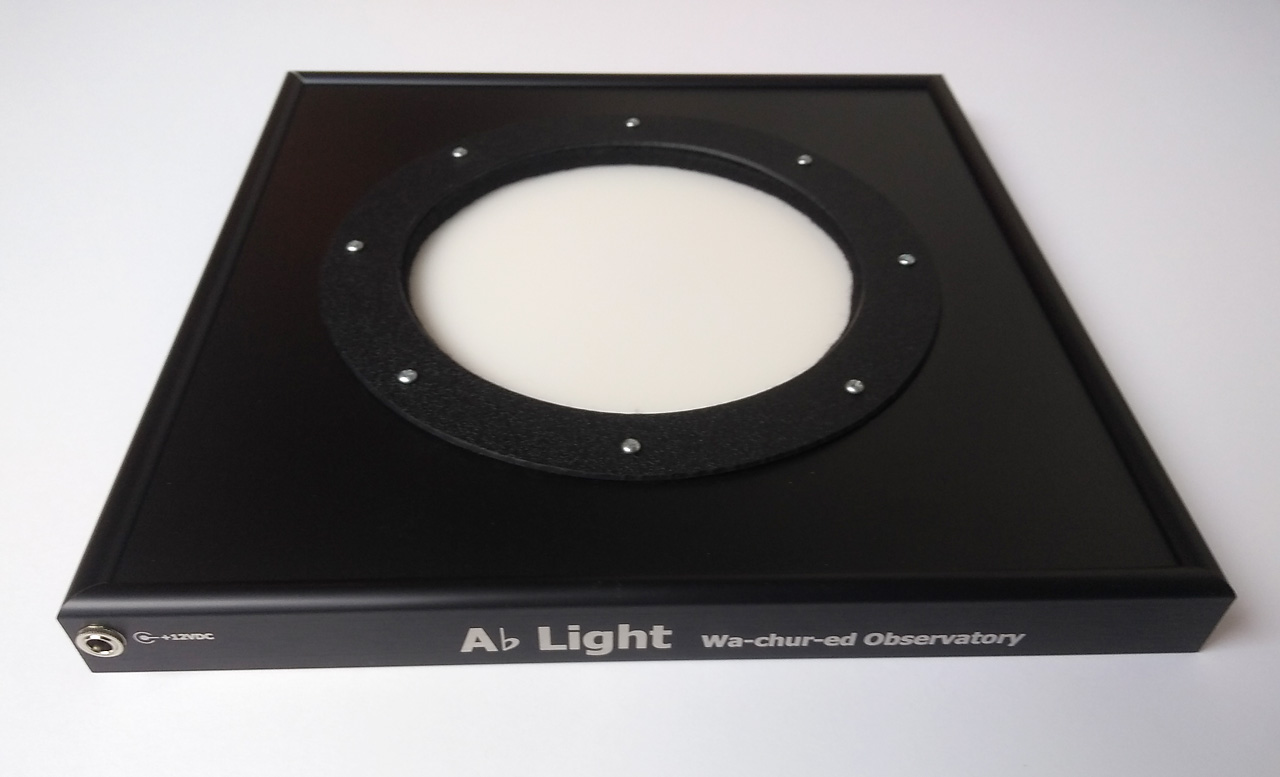In my last post I explained what flat calibration is and what is required to make it work. In this post I will introduce my solution to the problem, “Ab Light”:
The name (in case it isn’t obvious) is a small pun based on my interest in music. “Ab” is read as “A flat”, and this is ‘a flat light’.
Ab Light (abbreviated AbL) is based on LED technology, with a light pipe made of a special type of acrylic that is designed to provide even illumination when lit from the edges. I used the same material for the illumination of my backlit film prints of astrophotos, but AbL is different from that in several ways:
1. The LEDs are chosen to provide a good spectrum for both broadband RGB and narrowband (SHO) imaging. I designed and manufacture the LED circuit boards to optimize the quality.
2. In addition to the inherent even illumination provided by the special acrylic, I calibrate the ‘flatness’ further by generating a brightness masked based on measurements from the uncalibrated panel.
3. The front is covered with a tough plastic film with a matte finish. This protects the acrylic from scratches and dirt, and the matte finish prevents double reflections from the objective of the telescope.
4. The color temperature (white balance) is 4000K, and the color rendering index (CRI) is 90. 4000K is not ideal for one-shot color cameras, but is close enough, and provides excellent color for the other types of filters.
The Flat Light takes 12VDC power (using the standard 5.5 by 2.1mm barrel connector). It does not regulate the current to the LEDs (and thus the brightness) because that would make it impossible to use an external dimmer, such as the PWM output of Power*Star. Without a dimmer the light is fairly bright, which allows for reasonably quick exposures using narrowband filters. For RGB imaging (either using filters or a one-shot color camera) the brightness is sometimes too high in the sense that the required shutter speed may exceed the limits of cameras made specifically for astrophotography (DSLR cameras are usually capable of very high shutter speeds, so not a problem). If you need the brightness to be lower a PWM type dimmer (with 12V output) is the best way to do it. Reducing the voltage to the Flat Light will reduce the brightness, but only over a fairly narrow range, which means that it is difficult to control.
There are 2 different versions of Ab Light; standard and ‘fitted’. The standard version has a simple 7” aperture (large enough for most refractors) formed by a black plastic cover on the front. It can be used either by pointing the ‘scope straight up and placing the panel on top of it, or by placing the panel on a convenient surface and pointing the ‘scope at it. The fitted version is custom made to fit over the dew shield of your ‘scope. The opening is lined with black felt with a depth of about ¼ inch. This allows you to capture flat calibration frames with the ‘scope pointed in almost any position, and at any time. That is, light does not leak from the panel, so you can use it in the dark without losing your night vision (or upsetting your fellow astronomers).
Larger sizes of either version can be custom made (contact me for more information). The standard AbL is priced at $149 and the fitted version at $199. I haven’t yet built up any inventory, or put AbL in the products tab of the website, but the standard version will typically be available from stock. The fitted version is always custom made, since it is fitted to your telescope. This will typically take about 2 weeks.
There will be at least one other new product in the ‘music series’, a dimmer for AbL. It will, of course, be called ‘Adim Controller’. A friend suggested that ‘B#” (‘be sharp’) would be a good name for a focus controller, but of course, the musical scale does not include a B#. Too bad!
On an entirely different topic, there will be a lunar eclipse tomorrow morning, May 26. In the Portland, OR area the total eclipse begins at about 4:11AM and lasts until about 4:25AM. For other locations the time will be different, and the eclipse might not reach totality (or be visible at all), so check other resources, such as https://www.timeanddate.com/.

